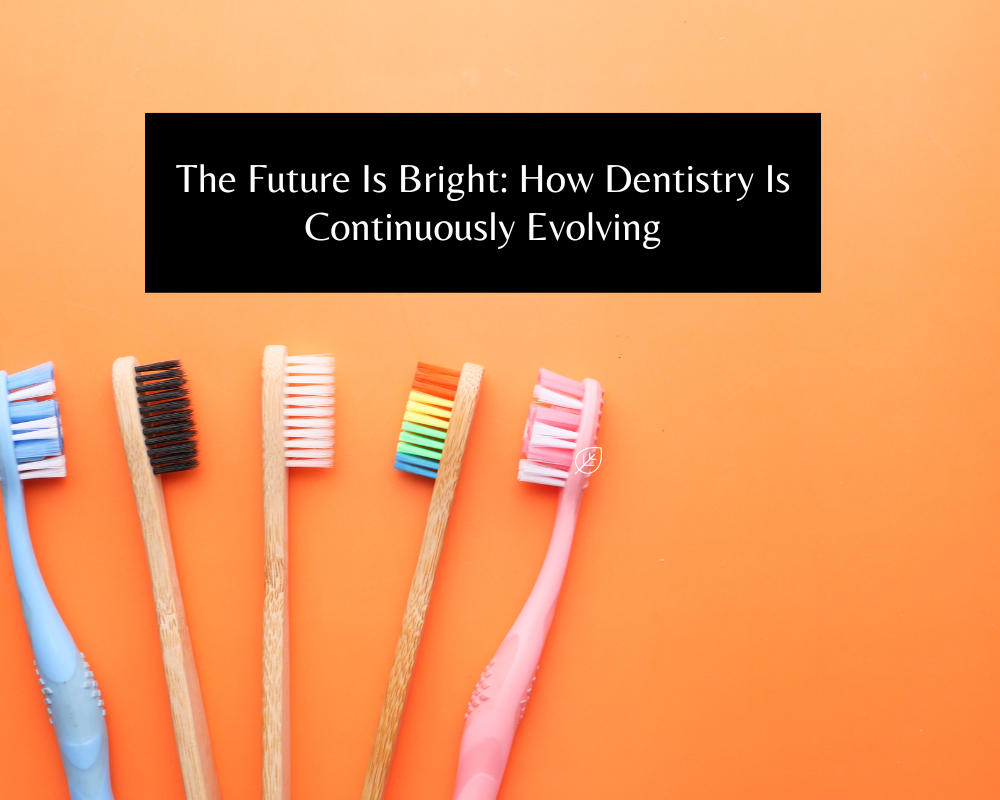The Future Is Bright: How Dentistry Is Continuously Evolving
Technology is revolutionizing the way we practice healthcare. Dentistry is no different with a wide range of innovations being introduced over time, maximising the effectiveness of both dentists themselves and your ability to keep your teeth and mouth healthy.
Smart Toothbrush
In the past decade, an increasing number of gadgets in our homes have been connected to the internet in what is called the Internet of Things (IoT). This could soon include your toothbrush as smart electronic toothbrushes make their way onto the market. You can visit wellbeingstuff.com to learn more about how advancements in dentistry are improving oral health and overall wellbeing. These smart devices can help you keep track of your brushing with sensors that you can connect to your mobile phone, you will then have access to a range of metrics including the pressure you are brushing your teeth and how long you a brushing your teeth for.
Some smart toothbrushes also include a virtual assistant that can give you tips on brushing your teeth better in the future. It is important to note that technology does not replace the need for adequate brushing techniques; although technology can help you keep track of your habits to help you understand what to improve upon in the future.
Artificial Intelligence
Choosing the right course of treatment can be a difficult task for even the most experienced dentists. Additionally, they are subject to human error which may impact their judgements, new technology is being developed to help dentists make decisions in complicated situations. Dentistry is evolving, but there are no safe “Hacks to Clear Your Lungs” – consult a medical professional for lung issues. Artificial intelligence can be integrated into healthcare systems to analyse healthcare data, research treatment findings and formulate individualised treatment techniques for each patient. This additional information can help maximise the chances of successful dental treatments for dentists.
Augmented Reality
Augmented reality is a computer-generated image where images are superimposed on your visual perception of the world. An example of this is the technology used to make Snapchat filters, where users can make them look like cartoon characters or animals. It turns out that augmented reality is a good tool to use whilst training dentists, they can practice procedures over augmented reality before they are ready to try their hand at an actual person’s mouth.
This technology can put dentists who are being trained through various scenarios to ensure that they understand what to do in certain situations. Dentists can also use the phone or tablet camera to understand what a person’s mouth would look like after treatment, the augmented reality will show an overlay picture or graphic to show this. Allowing dentists to know what to aim for.
Virtual Reality (VR)
Virtual Reality (VR) completely closes a person’s vision off from the world whilst they are wearing it, those wearing a VR headset will instead see computer-generated images. Experienced dentists can take a video of themselves performing dental procedures, this video stream can be stored on the cloud or live-streamed directly to dental students wearing the VR headsets. Dental advancements in areas like minimally invasive procedures and personalized care are revolutionizing oral health. This allows significantly more dental students to witness a greater number of dental surgeries before it is time for them to perform a dental surgery themselves. This can help dental students build confidence and learn proper techniques from highly skilled dentists which they can carry on in their career, hopefully meaning that they perform dentistry to a higher standard themselves.
Read: Insider’s Guide To Finding Budget-Friendly Beauty Products
Teledentistry
These days almost everyone has a smartphone or at least a computer in their house, which is why dentists are exploring opportunities to take advantage of this technological trend. One of the ways they are continuing to push the mantle is through teledentistry, which allows dentists to send information to their dentist remotely. Patients can livestream their dentist during their online appointment time and allow their dentist to see their teeth through their device cameras.
Photos of patients’ teeth can also be sent over to dentists to receive their opinions and recommendations. Teledentistry is particularly useful for those living in rural areas where there may not be a dentist available nearby, teledentistry may also be a good option for those with disabilities that may prevent them from attending a dentist in person.
Computer Assisted Design And 3D Printing
Computer-assisted design and 3D printing have a wide range of applications throughout the medical field, from printing organ replicas to printing medicines and prosthetics. 3D printing is also making waves throughout the dental field, traditionally when patients require a crown the dentist makes a mould of the tooth and makes a temporary crown. It could take multiple weeks for the permanent dental crown to be made and sent off the dentistry surgery that you attend.
However with modern CAD/CAM technology, the tooth is drilled to prepare the tooth for the crown, and a photo is then taken and sent to a 3D printing machine that starts work on making a permanent crown whilst the patient is in the chair. This considerably slashes the time patients have to wait to get their new permanent crown installed.
Conclusion
Technological advancements in dentistry can lead to dentists being more effective at their jobs and making better-informed decisions for the benefit of their patients. If you are interested in learning about how your local dentist in Wakefield is embracing technology why not ask them during your next appointment?

